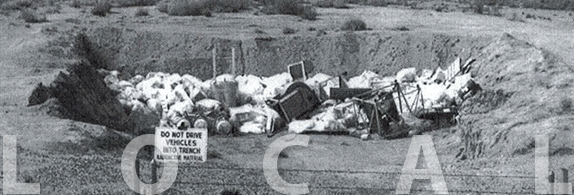Cynicism is Never the Answer

If despair is no good, cynicism is worse. Despair allows us to fall by the wayside and opt out, but cynicism keeps us in the game, so to speak, as voices of nihilism and debunkers of possibility. Nothing works for a cynic. Nothing good can come of anything. Cynicism can disguise itself as skepticism, as always having a wary eye out for baloney and hooey and bunk. But a true skeptic is not looking for everything to fail and fall apart like a modern cynic is. The skeptic honors the possible by scouring away the barnacles of delusion. Skeptics still think a positive future is possible, though they might have no faith in it appearing anytime soon in a burst of transcendence.
2014 has been a year of so many traumas and disillusionments, national, international and local, that the sour hopelessness of cynicism is a temptation that is hard to avoid at times. Crawling into one’s barrel and forgetting we are all in the same fix together is the cynic’s great mistake. The embarrassingly low turnout in local and national mid-term elections says to me our national character and state of mind is slipping dangerously close to the quicksand of political depression and the blank stare of solipsism and self-absorption. Hatred and cynicism share the same fuel – a disgust so deep and so pervasive that everything becomes nauseatingly tainted.
As numbingly brutal and absurd as the times have become, whole communities across the nation, and in our own town, have rallied to speak out against the cynicism of naked power and the self-righteous use of violence that comes with it. In Albuquerque, and even in New York, this arising of solidarity among the powerless majority has not been accompanied by violence and self-destruction, except when agent provocateurs ply their dirty trade. It seems that the reasoned and communitarian response to murderous racial and class profiling by police around the country could be the next step in a growing populism of hopeful compassion, an evolution of the World Trade Organization protests of 1999 and the Occupy Movement that flowed from it. This time, however, economic justice has been elevated and inspired by a long underground and now visible movement for a renewed insistence on social justice in America that not only speaks out against police violence but also argues against environmental injustice as it damages local resources and local lives.
German philosopher Peter Sloterdijk’s 1983 book Critique of Cynical Reason helps put this nascent sense of realistic hopefulness in perspective. Adam Kirsch, in the New Republic, writes of Sloterdijk’s view of a “generational world-weariness” in himself and his peers. “The dissolution of the student movement (in l968) must interest us because it represents a complex metamorphosis of hope into realism, of revolt into clever melancholy.” But the dark forces of cynicism would have us stop and settle in this world-weary cleverness, cover our heads and curse humankind for its intractable troubles, and explain away all useful efforts as meaningless drops in the bucket.
Skeptics of power and the status quo do not deny possibility. They question, they doubt, they look beneath and behind, they study and investigate, they have their suspicions, but they do not deny the possibility of what Sloterdijk would consider, in Kirsch’s words, “the human proclivity for self-transcendence, for constantly remaking and exceeding ourselves, for going ‘higher’ in every sense.”
There is much that could make us morbid and undermine our collective conscience which cries out for loving and reasoned action. The seemingly endless stream of murder by police in communities of color, the abuse of the homeless and the mentally ill in our city, a policy of torture, “disappearing” and “rendition” adopted by our own government in “the war on terror,” the tragedy of child hunger and the lingering menace of misogyny, the fox guarding the hen house agreement between the DOJ and the City of Albuquerque over police reform, the exponential growth of greenhouse gas emissions at the exact time when they must be dramatically reduced, helter skelter water schemes and the absence of any state-wide water master plan guided by community goals – the list is staggering.
The Cynic would turn his back on it all. The disengaged skeptic would question but remain in a mode of perpetual doubt. The more I think about Sloterdike the more it seems that a radical skepticism is called for combining doubt with action and the belief in the human proclivity to strive for a better life and “higher” way of living.
We do not need the political sidelines packed with back-turners and mutterers. We do not need the foolhardy “What, Me worry?” grins of the well-off deniers of trouble and wrong. We need angry skeptics – intellectually tough minded, insightful, and politically bare knuckled if need be – to commit to long term change in the service of economic and environmental justice, compassionate communities, peace loving international statecraft, and the end of racism and sexism in this nation.
Cynics don’t think there’s anything worth their effort anymore because nothing will ever go right again. Embattled skeptics know that’s wrong. They can’t bear to waste the chances that the open future offers us. They can’t bear to slam the door. Loving struggle is enough, skeptical though they may be.
Local News Everywhere

The battle for the attention of news consumers has been skewed for years by national media companies with enough money to hire large staffs and craft the news to fit ideological or financial goals. National news, gossip, scandal, weather and sports have all but drowned out local news in America. The constant blaring of national TV infotainment has been winning the battle for attention since the l980s.
People all over America often know more about what’s happening in Afghanistan and the Ukraine than what’s happening in their hometowns. National politics overshadows the doings and decisions of local statehouses and city and county governments.
But local news is making something of a comeback. It’s just beginning, but it’s great to see.
Longtime New Mexico journalist Jeff Proctor, for instance, has brought new life to local TV news on Albuquerque’s CBS affiliate KRQE-13. His coverage of Albuquerque shootings and killings by police, APD’s infiltration of peaceful protests, the folly of using grand juries to prosecute police officers, long form pieces on individual police shooters, and a myriad of other stories have given a new edge and a new life to local TV news.
KNME-TV, the Albuquerque PBS affiliate, produced on New Mexico in Focus, a riveting 21 minute interview and commentary on the dreadfully toxic and radioactive Mixed Waste Landfill (MWL) on Sandia Base near the Mesa Del Sol residential community and business park. Using the pending approval of Sandia’s storage of this deadly waste by the New Mexico Environment Department as the lead, producer and interviewer Floyd Vasquez did a masterful job of explaining the issue. He wove together information by interviewing Dave McCoy of Citizen Action New Mexico, a long time WML watchdog, and UNM professor David Correia who spoke on racism and pollution. Though Sandia officials refused to take part in the coverage, Vasquez added in old clips of Sandia managers basically denying that the MWL is leaking into the ground water and arguing that it poses no threat to public health. It was eye opening, even for those of us who have followed this closely over the years.
A piece on innovative water strategies in Los Angeles by a writer for the New York Times proves another point about the necessity of strong local coverage, even if it’s not produced locally. Not only does it inform the citizens of the immediate locality, it gives readers in outlying areas insights into what other places are doing. This can be important knowledge when media in your own area seems to be negligent as ours often does when it comes to the environment.
We learned from the piece that San Francisco has reduced its per capita water use to 46 gallons a day compared to some 130 gallons or so in Albuquerque. How does that happen? One couldn’t ask such a potentially provocative question if one didn’t have information to spur further research. Los Angeles flood control projects became worse than the problem they were designed to control when urban density created so much pavement, housing and retail, that runoff pollution became a growing problem contaminating the beaches and ocean with “animal waste, car oil, toxic chemicals and metals.”
Los Angeles is experimenting with reorganizing its flood control infrastructure so it captures water, “not cast it into the sea. If storm water is harvested and directed into aquifers,…floods can be prevented. Then the stored water can be pumped when needed, treated and consumed.” House lots and small neighborhoods in south central Los Angeles have been turned into “miniature watersheds” by reconstructing yards and streets to slow water down, store it, absorb it, and direct it to the aquifer.
This is the kind of innovation readers in the Southwest need to know about if they are to be informed citizens who lobby with local officials to become more aggressive and creative in solving water issues in their own locations.
We learned from the Santa Fe New Mexican, via the Associated Press last week, that unlike New Mexico which is pitifully underprepared for the water wars of the future, Colorado is gearing up to protect its water from the other six states who are part of the Colorado River Compact of l922, the dominant water agreement in the West.
As water managers from the Compact states convene to face the shortages and inevitable conflicts caused by current historic drought, the State of Colorado is creating strategies to protect its water sources from attempts by other states to take from the Colorado River watershed more water than the current agreement allows.
Not all local news is generated by local news organizations. But the more decentralized information we get, as opposed to national infotainment, the better prepared we will be to face the demands of the future.
Why We Love New Mexico – Because It Still Is What It Is

New Mexico in the winter feels like a trusted old friend. No matter how hard life can get, no matter the heaps of troubles and sadnesses, and, yes, the opportunities and positive changes, this home place of ours stays true to itself. You can count on it to be what it’s always been at heart – its people generous, courageous and kind, its landscape beautiful, mysterious and unimaginable in its totality as the Milky Way itself, and its traditions and cultures and faiths creating a spirit of renewal and resilience that can’t be broken.
In the winter many of us reflect on our long friendship with New Mexico and the nurturing constancy it’s always given us. The world here still looks the same, despite building booms and busts, still tastes the same with posole, bisochitos, green chile, still smells the same with cedar and pinon in the air, still feels the same in the woods, in the mountains, in family kitchens and around dining tables. You can still smile at a New Mexican and get a smile back. The manners of a place reflect its character, and our manners are predominately tolerant and open hearted.
Being able to trust a place to be what it is in a time of constant change like ours is something of a miracle in itself. New Mexico has refused to compromise its inner realities. It won’t be homogenized. It declines to conform. It’s too vast in space, and too warm and welcoming in temperament, to be conquered by pessimism or cowed into joining the corrupting mob of the thoughtless and unkindly.
This Christmas Eve when my family and I put out our luminarias we know that the life of New Mexico, its steadfastness and nobility, has lighted our way for decades, inspiring us, teaching us and, like a trusted old friend, never letting us down.
And that is its gift to us. We can be who we are here. We can say and think what we believe to be true. We are not required to fake it, to conform, to submit ourselves to forced compromise. As tough as it can be here, as hard as making a decent living can be, the place itself refuses to oppress us or cause us to feel dejected and abused. That’s not in New Mexico’s character. In the winter we can see more clearly who our friends really are. I’m not exactly sure why. But being right here, right now, in this singular place on the planet, feels to me like being in a long, energizing conversation with that one old friend you can always count on, and always have.
(Photos: Avoid cynicism post it note from gdsteam / CC; Posole by Mr. T in DC / CC; Luminarias by Christopher Holden / CC)




Responses to “Provincial Matters, 12-15-2014”